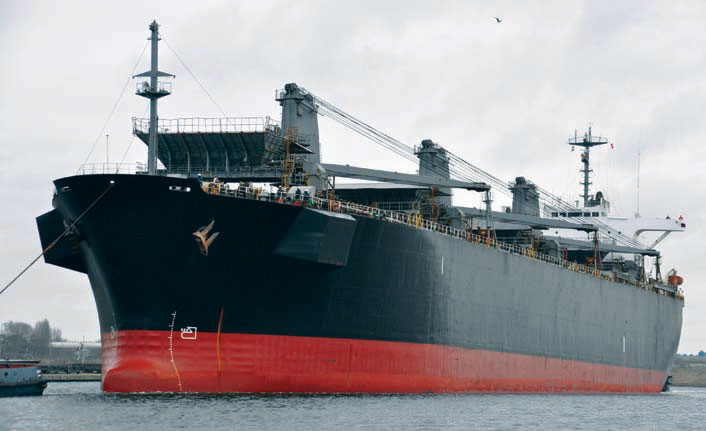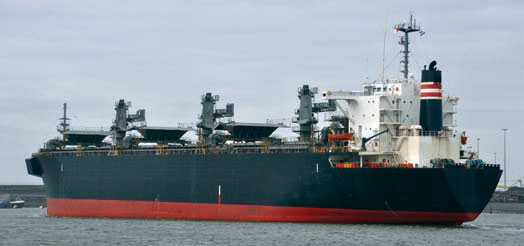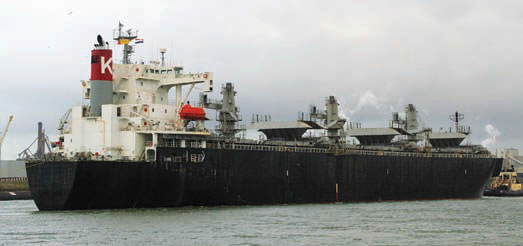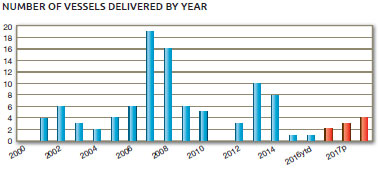Shipping Chips to Turkey
6 July 2017Turkey, as we have seen in the previous article, is unique in that much of the raw material for its huge and successful MDF industry comes from overseas. Specialist shipping brokers Arc Chartering is the leader in the transport of this material. Travis Meadows, CEO of Arc, explains the logic and the logistics of transporting wood chips around the world
The wood chip export and import trade is now a global one.
The first specialised wood chip carrier was built in 1964 by Japanese shipping company NYK, and the trade has been growing ever since. The last seven years, since the 2009 financial collapse, have seen a steady rise to a total trade last year of 25 million oven dried metric tonnes.
Fleet tonnages followed the same trend. In 2007 the fleet was around 150 ships and it climbed to upwards of 162 ships in 2010, compared to around 133 today, so it has shrunk by around 18% in the last seven years.
2007 and 2008 was a big expansion time: 35 new ships were built during those two years alone. In fact, that was the fastest growth that wood chip carriers have had in the last 20 years. The chart shown on the right will help illustrate that fact.
Arc Chartering was started in 2011 during a time of continued and expected growth for the Turkish MDF market. We have had the experience and expertise in this market since it started in 2005. Some of our clients are the biggest suppliers of raw material into this market, so it was a natural evolution of our growth.
We come from a background of operating and chartering wood chip carriers ; any market that requires this material will need someone with the expertise to arrange for transportation from wherever they are supplying or buying the material. Cargos can be destined for paper, for biomass power generation, or for panels. The industrial paper players have been around for decades so their routes, supply sources, mills and discharge ports are all pretty well-known.
MDF is the same. As for biomass, there is usually great publicity around proposed plants or conversions. Usually this is generated to raise either public support, financial funding or subsidy support from related governments. Of course if we are handling the shipments we know 100% what the material will be used for and have a good idea of the end-user’s activities. Generally, wood chips are the main type of cargo carried rather than fibre or logs. This is mainly due to supply sources but also due to economies of scale and vessel design. Logs are also carried, but the majority of the log fleet tends to be smaller handy sized vessels in the range of 28,000-32,000dwt (deadweight tonnage). Wood chip carriers tend to be around 40,000-49,999dwt (typically carrying around 42-45,000 GMT of cargo) and increasingly, for the most modern vessels, 50-64,000dwt (typically carrying around 48-54,000 GMT of cargo).
The economics of ocean transport depend hugely on economies of scale. As mentioned above, the majority of these vessels range in size from 40,000-49,999dwt and increasingly from 50,000-64,000dwt. For wood chip carriers they are typically grouped or classified by their total internal cubic foot capacity. The older generation – 40 to 49 vessels – have carrying capacity of 3.5 million or 3.6 million cubic feet and the new generation are 3.9-4.3 million cubic feet. So how many such vessels are there and who owns them?
There are currently around 133 dedicated wood chip carriers trading throughout the world and the vast majority trade in the Pacific market. Over 72% is controlled by Japanese owners, with almost 58% being the big three (MOL, NYK and Kline). China, or Chinese interests, control another 20% (NOVA controlling almost 10%). The balance is controlled by other parties, some of which are either paper companies or MDF producers, which is where Turkey comes into the picture: one producer, Yildiz Entegre, owns two ships while another, Kastamonu Entegre, owns one and has another on order for 2018 delivery.
The total tonnage involved is 6,982,639dwt with total cubic capacity around 55 million cubic feet. Wood chip carriers make up about 1.3% of the world bulker fleet.
The fleet used to be an ageing one, but there has been an aggressive scrapping programme over the last few years and a limited new building programme, thereby reducing the overall fleet size. Since 2012 almost 57 ships have been scrapped, while only 23 were delivered. The average age of the fleet is just under 13 years. Average age of scrapped vessels is just over 22 years. Today these vessels can be built for around US$35-40m, depending on size, timing and which yard is building them.
The main sources for the Turkish MDF market are the east coast of the US and east coast Canada. There are a few shipments from time to time from Brazil but most of the Brazilian supply still goes to Japanese paper companies.
Chile is not really a supplier for the Atlantic market; typically it supplies the Japanese and Chinese paper companies. There is a heavy Japanese investment in Chile, so that market is pretty dedicated; and the distance and Panama Canal costs make it unattractive to other markets.
Turkey also imported some smaller logs and chip shipments from Ukraine in the past and has more recently imported from Latvia. Uruguay is also a very big supplier to the Portuguese market, for paper. Besides Turkey it is the second biggest market for wood chips in the Atlantic. Portugal also imports some from Brazil.
It is important to note that the reason North American exports go almost exclusively to Turkey is that there is a ban on North American softwood to the EU due to phytosanitary issues arising from the pinewood nematode. This has been in place for a long time. Prior to 2005 a few shipments to the EU were made, but since then nothing in terms of softwood has been exported.
The voyage from East Coast US to Turkey takes around 18-20 days and Canada to Turkey 15-17 days.
Exactly how many client companies there are is a tough question. We can say that there are around seven main importers in Turkey for the MDF market. As I mentioned above, Kastamonu owns one wood chip carrier and exports from its own facility in Jacksonville, Florida; Yildiz, with two carriers, has a third ship on period contract. Other Turkish importers are Yildiz Sunta, Starwood, Teverpan, AGT, and Camsan.
The cost of transport changes all the time so there is no way to quantify this without any base line. A big fluctuation factor is fuel prices, which change daily, so it would be misguided to give an estimate for an article such as this. And some customers have longor semi-long term contracts, which also change the pricing. Pricing is also affected by the terms of the particular business. Another big factor is moisture content and compaction factors. As you can see, pricing is quite a rabbit hole.
This is a lightweight, bulky cargo, of relatively low value per tonne or per cubic metre. This does not pose an issue since the cargoes are mostly carried on wood chip carriers that are specifically designed for carrying light cargoes. What you can call a problem, if it is that, would be the moisture content of the wood chips. Clients are typically paying for total space so if there is a high moisture content that means they are really paying for transporting water.
There are no problems in storing at embarkation terminals. This material can be stored outside, uncovered (pellets are a different matter, but they would not be used in MDF). Wood chips do not need specialised terminals although some do have sophisticated hopper conveyor belt systems and jet slinger loaders.
Specialised vessels are not essential as we have exported many cargoes on traditional bulkers with no problems. Generally, that is done when there are no wood chip carriers available. In the Atlantic, there is only a handful of vessels trading and they are dedicated on yearly contracts. So if someone has a spot cargo it is typically transported on standard bulkers – a practice that has come about in the last couple of years.
The mills that transform it to MDF panels are usually close to the discharging ports but none that I am aware of are situated at the port specifically. The wood chip trade is typically a steady one. Of course, there are always short-term changes in demand due to unforeseen circumstances like the earthquake in Japan, the political/financial crisis in Turkey or other major events. These wood chip carriers are typically built against long term contracts of 10-15 years.
The Atlantic market is somewhat different. The tonnage used in the Atlantic is typically older and out of the long-term paper contracts that they were built to service.
The only real big change we have seen, in terms of either supply or demand on the commodity side, has been the growth of the Chinese market. Ten years ago China was not a big importer. Now it is the biggest and has subsidised Vietnam to become the biggest exporter of chips in the world.



